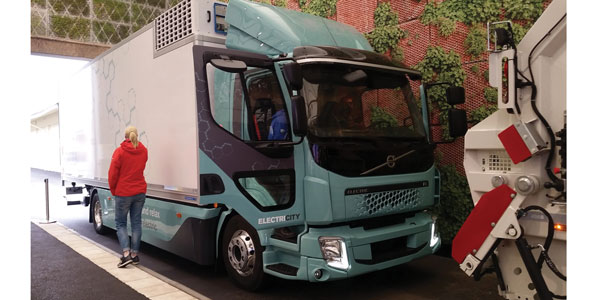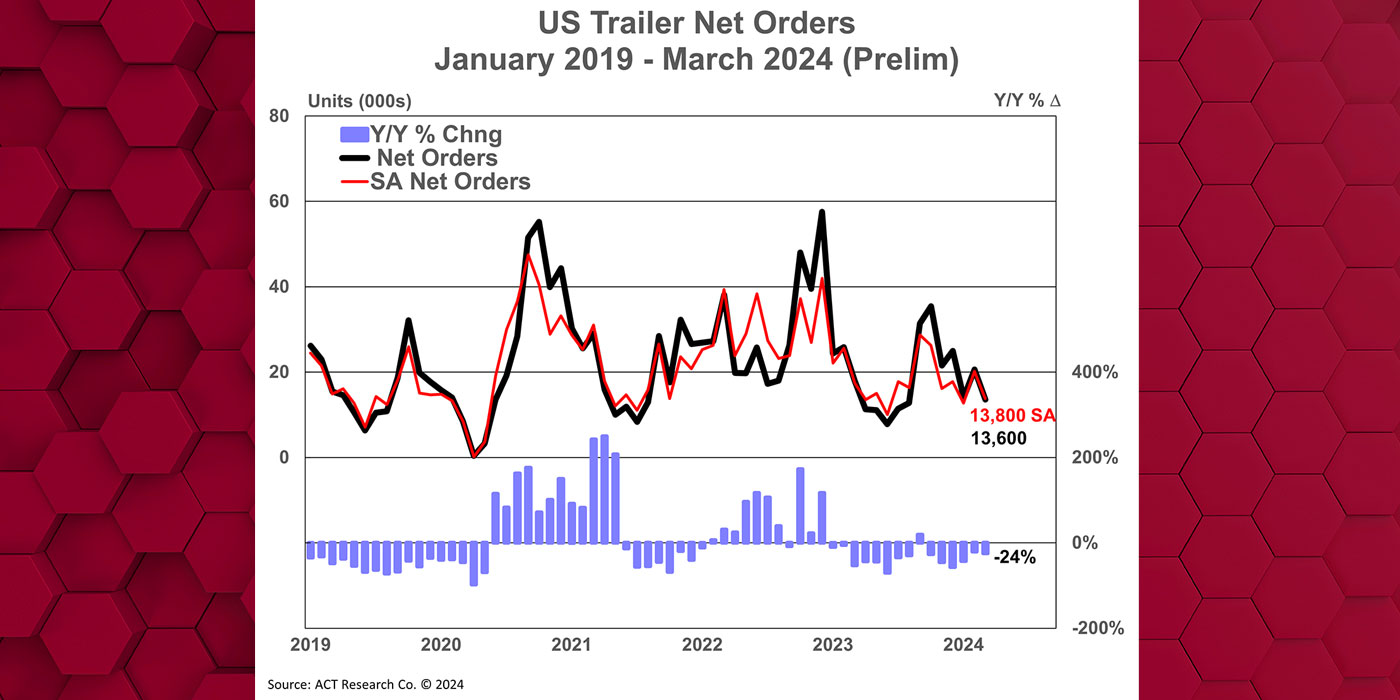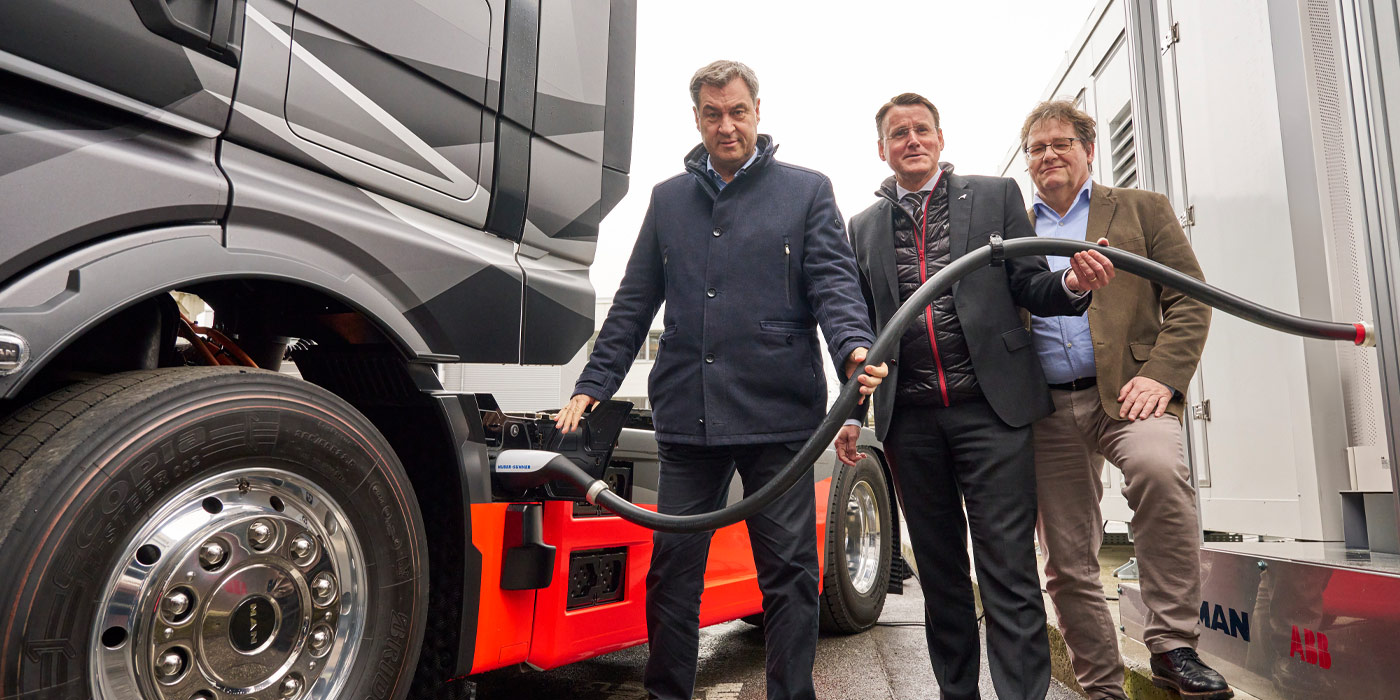It’s starting to rain a little bit here in Gothenburg, Sweden. In the cab of this particular truck that fact is more noticeable than it would normally be, because the sound of the rain is actually louder than the sound of the idling truck itself. Yes, this Class 7 truck, this behemoth refuse collection tool, is being drowned out by rain drops.
After getting in the seat, the resulting process feels more like driving a golf cart than a truck, with stunningly quick acceleration and braking providing yet another contrast to your typical heavy-duty truck. The truck boasts power of up to 248 HP, 313 ft./lbs. of torque, 35,274 lb. GVWR and a range of up to 186 miles. Driving Volvo’s FL Electric, a brand new prototype truck, makes it easy to get excited about the electrified future—even if the FL Electric and its Class 8 sibling, the FE Electric, are slated only for European release. (For reference, the FE Electric’s specs are as follows: 496 HP max, 627 ft./lbs. of torque, 59,525 lb. GVWR and a range of up to 125 miles).
Yes, they’re Europe-only—but there’s still reason to pay attention, because it’s very probable that these trucks will have an impact in North America at some point or another. So with that in mind, let’s address some of the big questions when it comes to electric trucks.
If this electric thing for sure?
Given the investment the OEM has made and its confidence to put the trucking industry press behind the wheel, Volvo seems to think so. When asked whether electric trucks will one day replace their diesel-fueled predecessors, Magnus Koeck, Volvo Trucks’ vice president of marketing and brand management, agreed that they will, but noted that we have no idea how far away that day might be. But in the meantime, adoption will be driven by application.
“We truly believe that this is here to stay. In the end, whenever that end is, we are talking electric,” Koeck said. “But of course, it needs to make business sense. It will start off much quicker in applications like refuse—but it will not stop there.”
Why Europe first?
There are a couple of reasons for this. One is that diesel fuel in Europe is double the price compared to the U.S., which makes the need for an alternative fuel that much more pressing. European emissions regulations are tighter, and many countries offer subsidies and tax breaks to users of electric vehicles. Add in that several major European countries and cities are implementing bans on internal combustion engines in the near future, and you can see why Europe is the priority for the Swedish OEM. And that leads directly to the next question…
So when is it coming to North America?
At this point you may be saying to yourself: Europe? Why should I care? Get back to me when this thing gets to North America. But as a European OEM, Volvo often brings its new technologies and products to Europe first, and if it works out, a North American release is usually soon to follow. Consider the I-Shift transmission, for example, which was released in Europe in 2001 and came to the U.S. in 2007. Koeck made clear that the only decision that has been made is to bring these trucks to Europe, but that “eventually” they will test it in North America as well.
And in that time, the technology will only improve.
“Battery technology is moving very fast, so by 2020, battery life will be improved by about 30%,” Anna Thordén, Volvo’s product manager of electromobility, said. “One or two years after that we will have energy-optimized batteries, so in the same size we will get double the amount of energy.”
As the technology improves, it will create even more applications where the total cost of ownership of going electric becomes beneficial.
How will this all work?
We’ve seen plenty of examples across the industry of electric truck production. But producing one truck and producing thousands plus a nationwide infrastructure of charging stations—well, those are two very different things.
On the Volvo electric trucks, for instance, there are two charging options: there is 22-kw onboard charging equipment that comes with the truck, allowing for overnight charging, and there is also the possibility to purchase a fast charging station which can do the job much more quickly. Overnight charging with onboard equipment takes about 10 hours to get to a full load. Using this port means you don’t need any equipment other than the onboard charging and a 380V, 32 amp port, which is generally available in most shops. But if you want faster charging, you’ll need to invest in a charging station, and those increase in cost the more power you want.
Across both the U.S. and Europe, infrastructure for charging electric trucks outside of the shop is already starting to be built. There are 400 electric charging sites planned by the end of 2019 in Europe, with an average of six ports per charging station; and 290 are planned in the U.S. in that same time frame. 290 is obviously no kind of nationwide network, but it’s a start, but if the electric truck industry starts taking off, that number could snowball in a hurry.
But for the foreseeable future, Volvo is focused on a multi-fuel approach, one that is predominantly diesel-based but which, as of now, includes electric. As Koeck summed it up: “We will be ready when the market is ready. This is only the beginning.”














